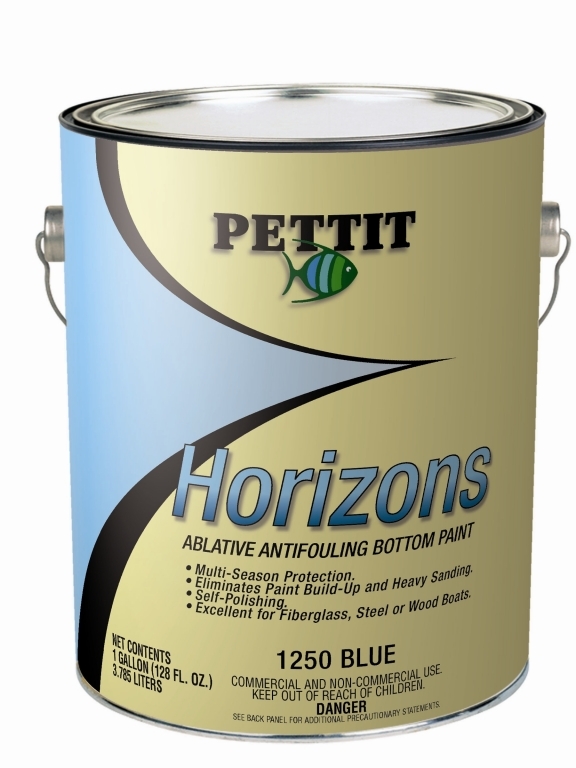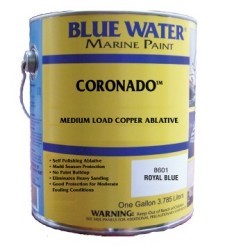Boat Bottom Antifouling Paint
Boat Bottom Paint Essentials
You already know that without bottom paint dutifully protecting the bottom of a boat that barnacles, zebra mussels, weeds and slime would proliferate dragging down acceleration, top speed and helm response. And that in order to inhibit marine growth we rely on quality boat bottom paint. But the big question is with the different types of anti-fouling lining the shelves of marine chandler's which one is the best choice for your boat? The answer is that in order to sort through the many offerings, it's vital to understand the basic differences between them. Only then can you intelligently pick the right product for your boat and its geographic area of operation.
About Boat Bottom Antifouling Paint
Boat Bottom Paint Essentials
Article courtesy of Tim Banse

You already know that without bottom paint dutifully protecting the bottom of a boat that barnacles, zebra mussels, weeds and slime would proliferate dragging down acceleration, top speed and helm response. And that in order to inhibit marine growth we rely on quality boat bottom paint. But the big question is with the different types of anti-fouling lining the shelves of marine chandler's which one is the best choice for your boat? The answer is that in order to sort through the many offerings, it's vital to understand the basic differences between them. Only then can you intelligently pick the right product for your boat and its geographic area of operation. In this story we'll cover the basics and suggest a couple of boat bottom paints. Unfortunately there isn't room to cover the myriad of brands and offerings.
Types of Bottom Paint
Let's begin at the beginning. Know that there are two basics types: ablative and hard, each one boasting distinctive properties. Soft ablative boat bottom paints release biocide at a constant rate throughout their life span, scrubbed away with use much like a bar of soap. One benefit to this scrubbing action is that as the biocide is used up the coat goes away. This characteristic reduces buildup, which in turn reduces the amount of surface preparation required before applying a new coat.
Pettit Marine Paint's Ultima SR-60 is an example of ablative boat bottom paint. It's loaded with copper (60%) and also dual biocides (slime resistant Irgarol) lending multi season protection.

In sharp contrast to ablative blends, hard bottom paints rely on contact leaching. Once it dries, the bottom is blanketed with a porous film saturated with biocides. The biocide releases in steadily decreasing amounts. Once exhausted, the hard film remains. Generally speaking, boats with hard anti-fouling coatings cannot be hauled and launched without repainting. One benefit to a hard anti-fouling coat is resistance to abrasion. Due to its low drag resistance, hard bottom products are an excellent choice for high performance boats.
Another offering is Pettit Trinidad SR, it's a hard anti-fouling blend offering multi-season protection thanks to dual biocides backed up with a high copper load. Left in the water, a bottom painted with Trinidad SR will enjoy years of protection.
So far we've given examples of ablative and hard boat bottom paints. How about one that incorporates all the benefits of both ablative and hard paints in one? That would be Pettit's multi-season Vivid offered in a palette of bright colors, including white, blue, green, yellow black and red.
Think whiter whites and blacker blacks. Primary colors can be applied as-is, or blended to create a custom color. Its hard, smooth surface withstands trailering and is easily burnished for lower drag, a godsend on high performance boats. When applied over the recommended priming system Vivid can be used on aluminum hulls and outdrives.

No matter what type or brand you decide on, it's crucial to painstakingly follow directions. Read the label, paying careful attention to the part about surface preparation. At a minimum the existing paint, which provides the foundation, must be in good condition - without flakes. Sand the entire bottom with 60 or 80-grit sandpaper, roughening the surface and lending the new coat a foothold. Question: Is this dirty, time-consuming surface preparation a Do-It-Yourself endeavor? Not if you can afford to pay the boatyard to do it.
Do It Right The First Time
Make sure the old anti-fouling and the new bottom paint are compatible. Consult the manufacturers chart. Thoroughly stir paint before and during application. Usually, the store will perform an initial shake-shake-shake with its shaker. For good reason marine supply stores will only shake cans that have never been opened. That said, even when you stir by hand with a flat wooden stick, five or 10 minutes should be sufficient to get all the biocide in suspension. The first few strokes with the stick will be difficult because the heavy compounds settle to the bottom. Be patient. And be sure to scrape down the sides of the can and the bottom to flow all of the ingredients into suspension. Stir the paint frequently during application to prevent settling.
It's absolutely critical that you follow over-coating times and immersion times. In other words, allow the product to dry thoroughly before applying another coat and before launching. If you don't, you risk the specter detaching from the hull, and all the time, energy and money you'll have spent will have been wasted. Finally, when finished, dispose of the empty cans in an environmentally friendly manner. If you're in doubt about how to do this, any boatyard will be able to tell you the proper procedure.
Tim Banse is a marine engines expert and has written about propulsion for Popular Mechanics, Yachting, Motor Boating, Boating Industry and other publications around the world. His current pet project is www.MarineEngineDigest.com, a source for free information about outboard motors, stern drives and inboards. Tim's articles will be seen here and in the iboats.com blog, plus at www.MarineEngineDigest.com.

